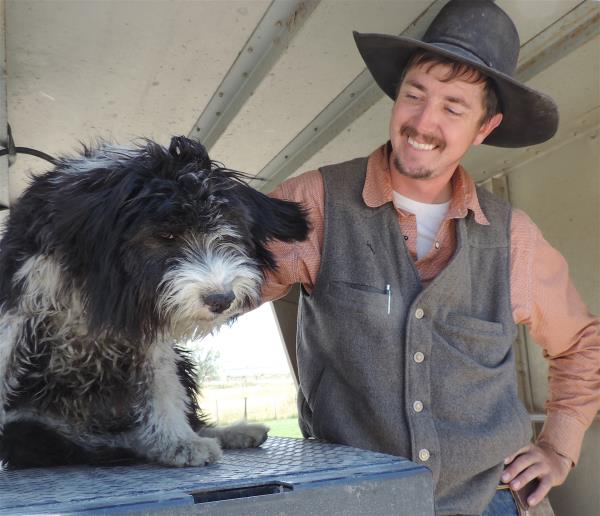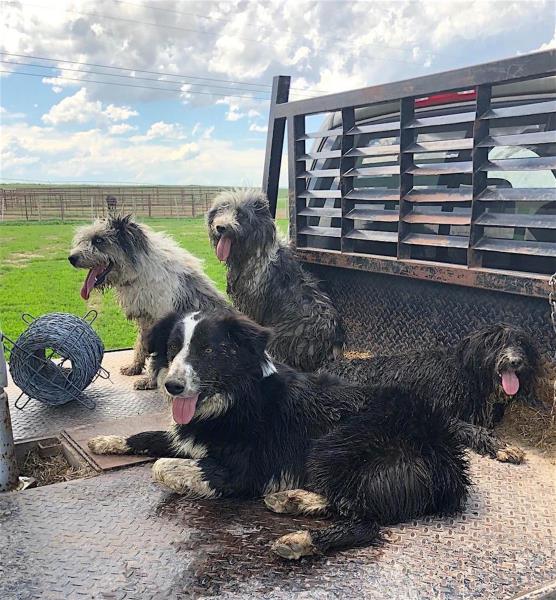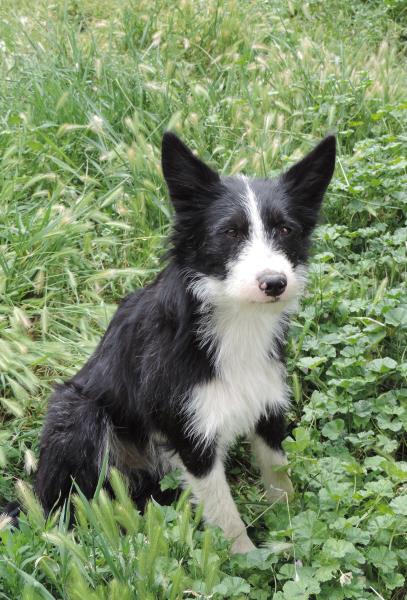Idaho Shags’ livestock handling spur their surge in popularity
 POCATELLO - The Idaho Shag’s breeding origins may be as fuzzy as their frazzled hair coat, yet after working with the comical-looking cow dogs, ranchers swear their loyalty to the breed.
POCATELLO - The Idaho Shag’s breeding origins may be as fuzzy as their frazzled hair coat, yet after working with the comical-looking cow dogs, ranchers swear their loyalty to the breed.
The Idaho Shag is renowned for its stamina, herding instinct, and most of all its unmistakable scruffy appearance as if it had an accident with an electric fence that left its hair permanently fried. A blend of Airedale terrier, border collie, kelpie or heeler, an Idaho Shag sounds like a breeding accident.
Curious about the breed, Susie Morton, who lives south of Mackay and manages a ranch, bought her first Idaho Shag three decades ago and became one of the first breeders in central Idaho.
“Whatever people think about their appearance, they’re really faithful and tough,” Morton said of the dogs, which generally weigh 40 to 50 pounds. “If they get kicked or beat up, they go right back at it.”
After buying her first female Idaho Shag in southern Idaho and working cattle with her, Morton was impressed.
“When she had pups, I kept some and started breeding them,” Morton said. “They’re becoming really popular, so more people have started breeding them.”
For decades she relied on her Idaho Shags while working for livestock associations near Challis, the Pahsimeroi and the Lost River Valley.
“They can go all day,” Morton said. “They can be hard-headed, so you just learn to deal with it. Early on, you have to make sure they know who the boss is. They really have a lot of personality.”

Whenever she checks cattle, her Shags, Monte, Henry, Mary, and Shorty accompany her.
Although rancher Sam Clark grew up near Mackay in the Lost River Valley, he never worked cattle with an Idaho Shag until about a year ago.
“I bought my first one from a friend in Malta and wouldn’t have any other breed now,” said Clark, who moved to the Raft River Valley in southeastern Idaho several years ago.
Working cattle, he said his Shag, Buddy, “goes all day, won’t back down, and rides on the back of my horse. At home, he’s protective of our daughter Payzlee.”
In eastern Idaho, Bill Fuchs, who owns the Henry’s Fork Ranch, a cattle and guest ranch near Chester, became a convert about eight years ago.
He and his son Tanner, 25, bought one and liked how she worked livestock so much they began breeding Shags.
Their small size may make livestock not take them seriously at first.
“If a cow doesn’t respect Marley or looks at her the wrong way, she lets them inch closer to her for a sniff, then she grabs their nose,” Fuchs said. “It’s her way of telling a cow to respect her space.”
“It’s amazing how many people are looking for that specific breed,” Fuchs said. “They’re great working dogs and companions. They’re friendly, not huge, and love moving cattle. If they need to be aggressive with a stubborn cow, they’ll get right in there and get her moving.”
The puppies amuse him.
“They have such a herding instinct they try to herd each other and are always wrestling as youngsters,” he said. “They look so easygoing, but we joke they turn into Tasmanian devils at dinner because they’re so protective of their food.”
Their herding instinct is so intense that they need some direction.
“We have sheep here, too, and they want to herd them, but we teach them that sheep are not on the herd menu,” he said. “Like all youngsters, they need an education. What makes them happiest is to go out and work cattle.”

Fuchs and his wife, Theresa, socialize the puppies, then their son Tanner trains them to work cattle.
Tanner said he prefers the breed because the Idaho Shags are gritty and persevere. “They really handle the weather well. The cold doesn’t bother them, probably because of the Airedale in them. They’re really loyal, too.
In central Idaho, the scruffy dogs are known as the Pahsimeroi Fuzzy, said Dr. Andrea Clifton, a veterinarian in Salmon.
“They’re awesome dogs,” she said. “I remember one named Fritz that was kicked by a cow and still kept working all day.”
They can be fearless, too.
“I’ve had some come in with porcupine quills,” she said. “They learn quickly to leave them alone.”
She said the dogs are intelligent, protective of family, have stamina, and want to please their owner.
“They’re tough and have an instinct to work cows all day, yet they can come home and play ball with the kids in the evening,” she said.
Cowboys are loyal to the breed, Clifton said.
“Once they start seeing how they work, that’s the only breed of dog they want.”
Still can't find what you are looking for? Find by topic:
- County Presidents & Board Information
- County Resource Page
- Delegate Form
- Discount Programs
- Discussion Meet
- Discussion Meet - High School
- Education Programs
- Events
- Excellence Award (YF&R)
- Expense Voucher
- Flickr
- Gem State Producer
- High School Discussion Meet
- High School Speech Contest
- Hope in Idaho Ag
- House of Delegates Credentials Form
- IFBF Board of Directors
- IFBF Staff
- Insurance
- Issue Advisory
- Legislative Action Program
- Legislative Issues
- Library
- MAC Trailer
- Magazines
- Map My Benefits
- Member Benefits
- Member Discount
- Membership Application
- Mental Health Resources
- Mission Statement
- Moving Agriculture to the Classroom
- Newsletter Sign up
- News Releases
- News Room
- Open Range Law
- Photo Contest
Thank You to Our Partners









